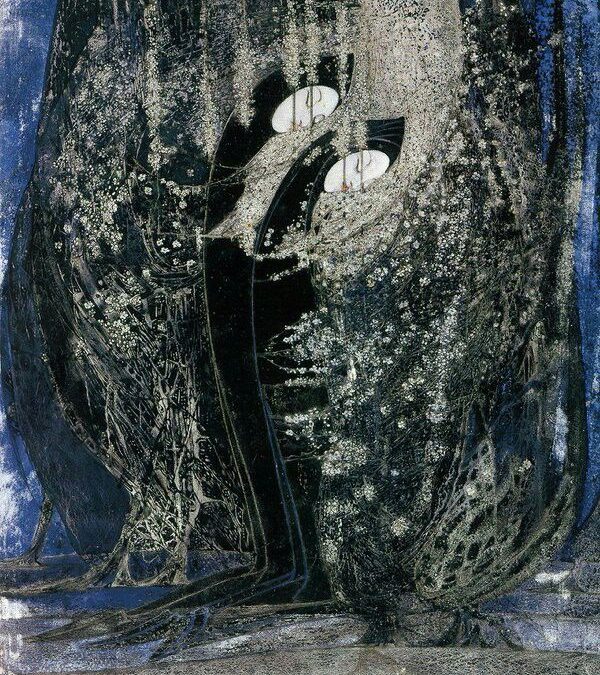Art Historian Stella Grace Lyons, who is an Arts Society Accredited Lecturer, presented to the Society a special Christmas Lecture entitled ‘Painting Winter: Snow Scenes in Art’ via Zoom.This was our first Webinar – we are so getting used to this technology now!
Stella bought alive some of the most beautifully crafted and fascinating art pieces illustrating the topic.
Some of the works are known to us all, such as Bruegel’s ‘Hunters in the Snow’ (1565) and ‘The Magpie’ by Monet (1868), but such was the range of paintings Stella introduced to us we were just as captivated by the detail of the winter domestic scene by the Limbourg brothers in ‘February’ from Les Tres Riches Heures du Duc de Berry. This medieval manuscript dates from 1413-1416, one hundred and fifty years before Bruegel and indeed this painting could be said to be the very first depicting a Winter scene.
and ‘The Magpie’ by Monet (1868), but such was the range of paintings Stella introduced to us we were just as captivated by the detail of the winter domestic scene by the Limbourg brothers in ‘February’ from Les Tres Riches Heures du Duc de Berry. This medieval manuscript dates from 1413-1416, one hundred and fifty years before Bruegel and indeed this painting could be said to be the very first depicting a Winter scene.
Both Bruegel and the Limbourg brothers and, much later, the work of Caspar David Friedrich (1774-1840) all captured the harshness of Winter, although Friedrich went further, seeing winter representing death and decay, symbolised by ‘Oak Tree in snow’ (1829).
Contrast this with Van Gogh’s ‘Flowering Peach trees’ 1888, where the winter is almost over, and the grass and blossom represent the pure regenerating spirit of nature.
We were also presented with Winter as a symbol of loss and grief. ‘The legend of the Blackthorns’ (shown at the top of the page) was painted by Margaret Macdonald in 1922 after the suicide of her sister. The two bowing pale dark figures are surrounded by a flowering blackthorn which, in Victorian flower symbolism, depicts mourning. It is sad to say that due to the pain of her grieving that, after completing this beautiful watercolour, Margaret Macdonald never painted again.
One of Stella’s favourite painters, Andrew Wyeth (1917-2009) painted ‘Winter’ (1946) after the death of his father who was tragically hit by a train. The painting depicts the artist running across a hill. Behind the hill is where his father had died. For Wyeth, this hill came to depict his father as sadly, he had never painted his portrait whilst his father was alive.
Another painting by Wyeth ‘Fence Line’ (1967) is a gorgeous watercolour on paper where you can sense that he truly ‘feels’ the winter ‘I prefer winter and fall, when you feel the bone structure in the landscape’
In this brief overview I have merely touched the surface of Stella’s truly enlightening and entertaining Christmas presentation. Thank you Stella for sharing your knowledge and understanding with us. I really hope you will be able to join us again soon. A big thank you from the Wolverhampton Society of Artists.
I have listed the paintings and artist referred to in the webinar below, should you wish to take a look for yourselves. If you do have the opportunity to look at Stella’s website and indeed maybe attend one of her online public lectures I guarantee you will not be disappointed.
I wish all our members and their families a very Happy Christmas.
The Limbourg Brothers ‘February’ from Les Tres Riches Heures du Duc de Berry 1413-1415
Pieter Bruegel the Elder Hunters in the Snow 1565
Hendrick Avercamp Winter Landscape with Skaters 1608
Henry Raeburn The Skating Minister 1790s
Casper David Friedrick Oak Tree in snow 1829, Winter Landscape 1811, Winter Landscape with church 1811
Vincent Van Gogh Flowering Peach Trees 1888
Claude Monet The Magpie 1868 (Monet painted 140 snow scenes!)
EA Hornel &George Henry The Druids bringing in the Mistletoe 1890
Margaret MacDonald The legend of the Blackthorns’ 1922
Andrew Wyeth Winter 1946, Fence Line 1967
Norman Rockwell Christmas Homecoming 1948i
